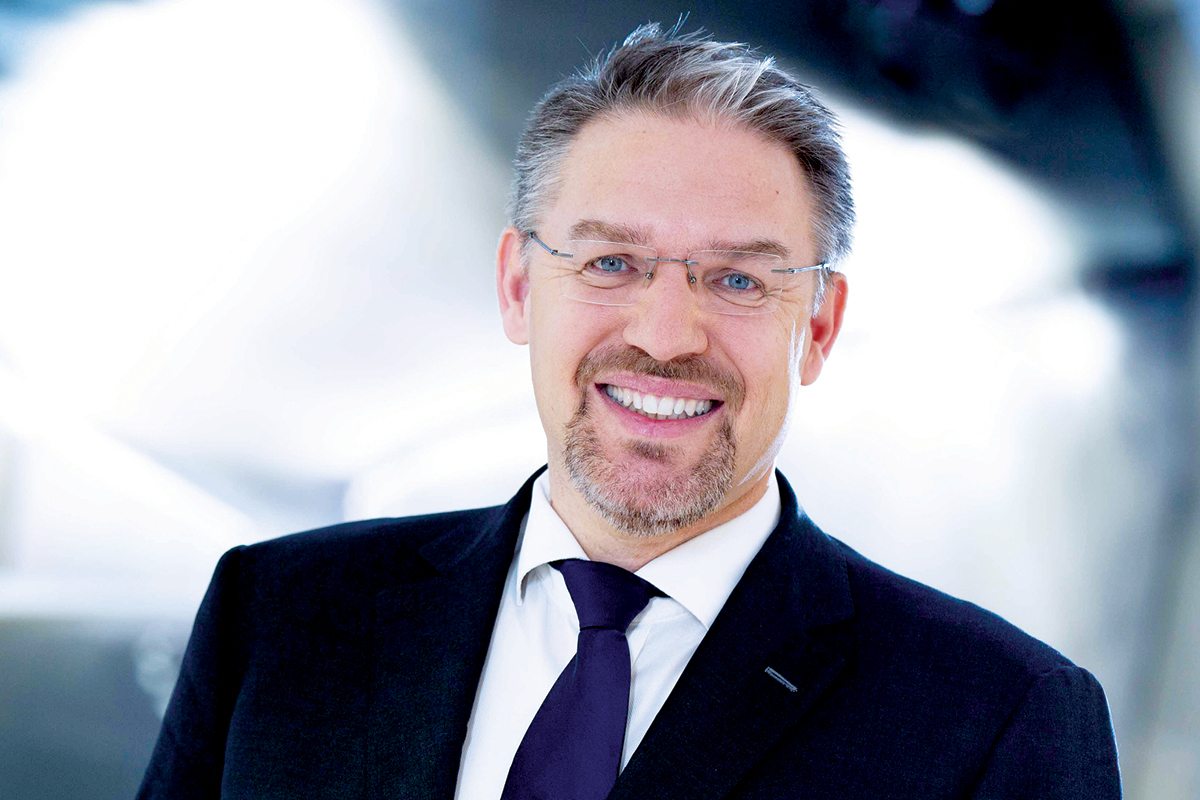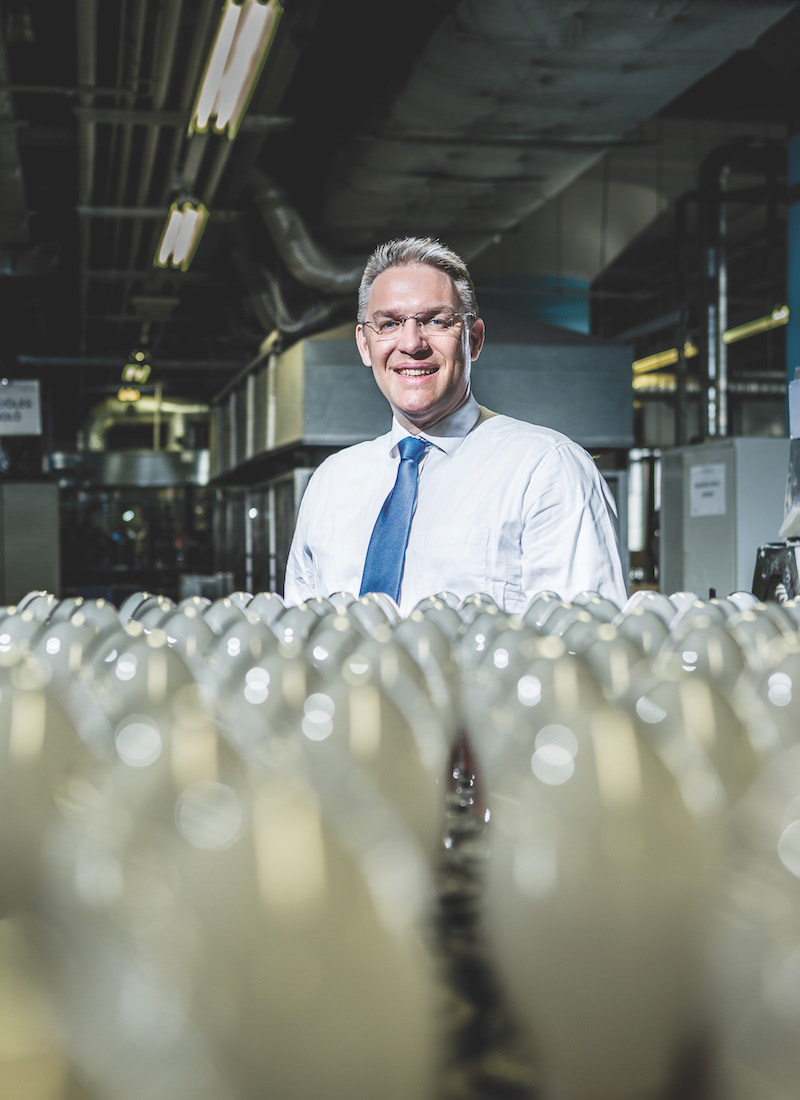Carmaker Audi, laboratory instrument maker Mettler Toledo and, finally, General Electric (GE); in his 20-year career, Joerg Bauer has always been a big-business kind of guy. That was until last year, when GE announced its wish to sell Tungsram and Joerg swooped in to acquire it.

Established in 1896, Tungsram is a manufacturer of lighting and one of Hungary’s oldest and most renowned brands. It came to represent GE’s EMEA lighting division after the MNC acquired the majority stake in it in 1990.
With the completion of the sale in April last year, Tungsram finally regained its independence after almost 30 years under GE. And Joerg, the buyer, went from being the former President of GE Hungary to President and CEO of Tungsram Group, a mid-sized company.
But as he has learned, there are advantages to being smaller. “Large organisations are constantly fighting complexity. That’s what kills them,” he explains.
“Tungsram, on the other hand, has the flexibility and agility to go after opportunities easily. We can enter into new markets that GE would not have entered; we can change the direction of the business and transform it.”
“Tungsram … has the flexibility and agility to go after opportunities.”
And the transformation Joerg wants is a more diversified Tungsram. “We want to build a business that has more than one pillar,” he reveals. “Lighting will always be a significant pillar for us, but we are looking for activities that will tap deeper into our supply chain and better utilise our global distribution network. We want to do more with what we already have.”
According to Joerg, Tungsram has subsidiaries in 22 countries presently and distribution partners covering some 110 global markets. The firm is currently eyeing a bigger market share in lighting products for the automotive and aviation industries.
The key to Tungsram’s diversification lies in its vertically integrated production. “Imagine a lamp. It may be made up off plastic, ceramic, metal and glass components. It also has tungsten wire,” Joerg illustrates.
“We produce all of those parts from scratch. For the glass, we start from quartz. For the wires, we start from big bricks of tungsten. We make all of it in-house.
“Because of this, we have a deep understanding of the production processes. We want to leverage this know-how and find secondary uses for all the things we produce,” he continues. “We can go to our customers and ask them what they need, then offer to make it for them.”
Tungsram’s history may stretch back 123 years, but its spirit is still very much that of an innovative start-up. It’s a characteristic rooted in the firm’s DNA. The company lays claim to setting up Europe’s first industrial research laboratory in 1921, which was modelled after Thomas Edison’s lab.
Its resident scientists include Imre Bródy, who invented krypton-filled bulbs; Zoltán Bay, who invented electroluminescent light sources, the predecessor of light emitting diodes (LEDs); and Pál Selényi, known as the father of xerography (electrophotography).
“I’m proud of this legacy,” says Joerg. “Being the bridge between the academics and the market has always been in our genes.”
Today, the research laboratory has been replaced by a more modern concept: a co-working space that Tungsram is offering to start-ups. Unlike conventional co-working spaces, it provides more than just office space.
“Being the bridge between the academics and the market has always been in our genes.”
Tenants can also tap into Tungsram’s resources for help in prototyping, production and distribution if their ideas take off. “We are working on partnerships that will give these start-ups seed funding,” says Joerg.

“We don’t intend on making a lot of money from this, but we believe that these start-ups have the potential to come up with cutting-edge solutions that we may want to integrate into our product portfolio.
“Given our size – we are not a global giant – we will never have an R&D department with a couple of thousand people,” Joerg explains.
“So, we have to focus on the areas where we can make significant contribution, the areas where the market is still fragmented and we can be a large player. By partnering with universities and start-ups, we are able to build flexible solutions without the overheads, fixed costs and time that larger organisations will take.”
The trick to juggling multiple new products in multiple new market segments, Joerg thinks, is to maintain a clear demarcation between the old and the new.
“We have a multi-speed environment,” he says. “We have lighting, which is an established business we know very well, and we have new segments, such as aviation and indoor farming, where we have to act like a start-up.
“I have made the conscious decision to keep these activities completely separate from one another and to not measure the success of one based on the performance of another. That’s because I want each of these new segments to develop as quickly as they can, without being affected by our core lighting segment, which will always continue to exist in a steady state.”
Other than building new relationships with start-ups, Joerg is aware of the importance of maintaining the longstanding ones that Tungsram has with its suppliers. “We are always interested to know what it takes to help our suppliers become successful partners,” he says.
“Everyone is in this to make some money. It has to be a win–win situation for all, otherwise it’s not a sustainable relationship.
“With the sale of Tungsram, we acquired 1,500 suppliers. Even with the change in management and with us becoming a much smaller company, not one of those suppliers left us, requested to revise their prices or asked for different terms and conditions,” Joerg reveals.
“I think that’s an extremely strong indication of the good relationships that we have built with our suppliers.”
Joerg’s dream is for the Tungsram brand to become genericised, or the Kleenex of the lighting world. “In some markets, for example Kuwait, instead of asking for a lamp in a shop, you could ask for a Tungsram. There, the Tungsram brand name has become synonymous with lighting products. We want this to happen in all markets.”
Proudly supported by:



